Polo Opposites
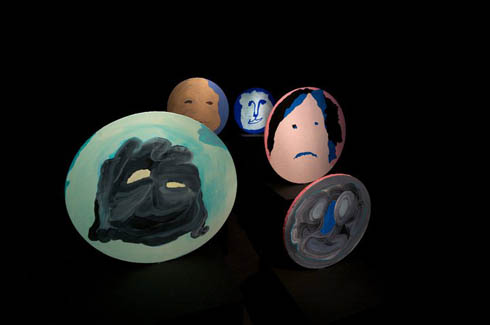
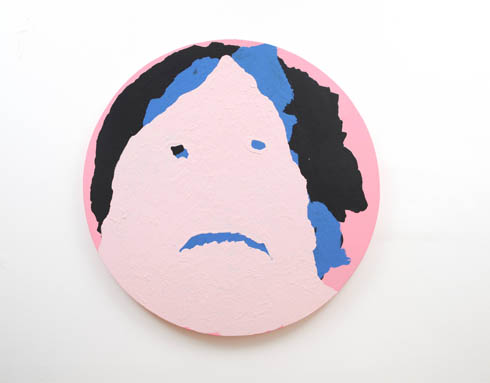
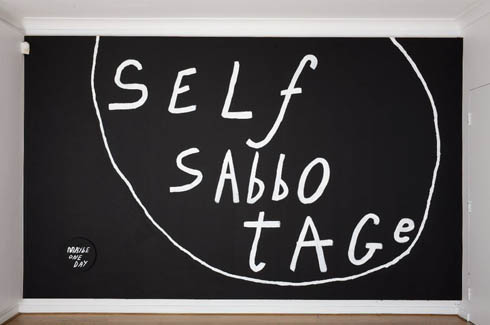
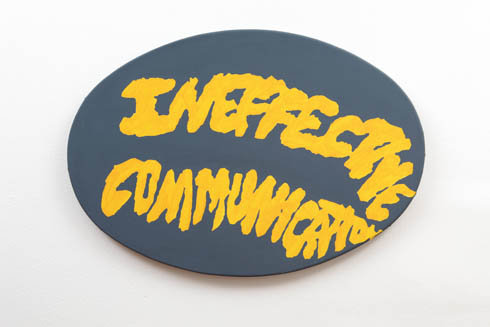
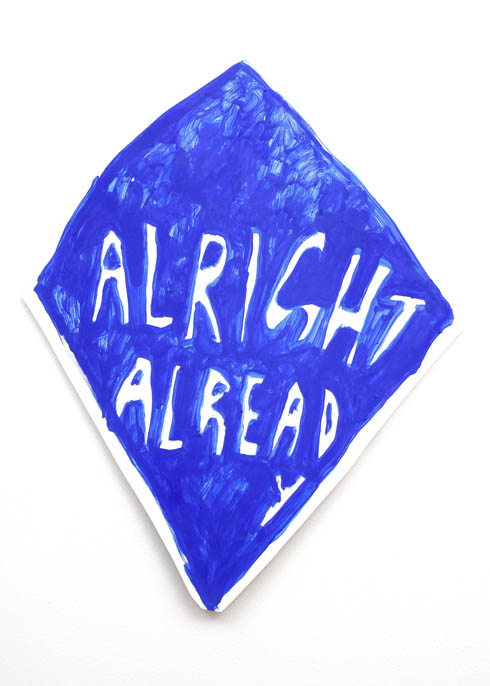
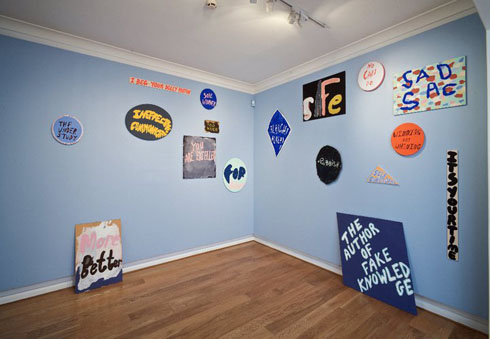
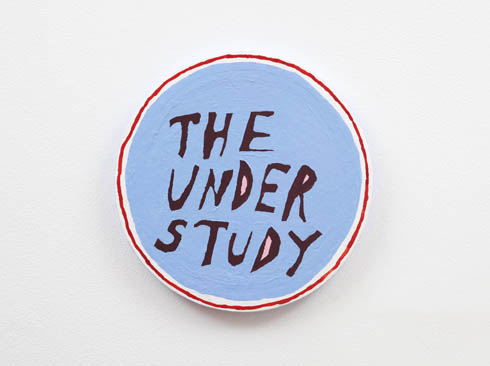
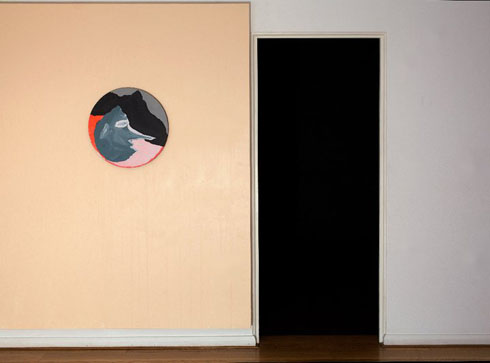
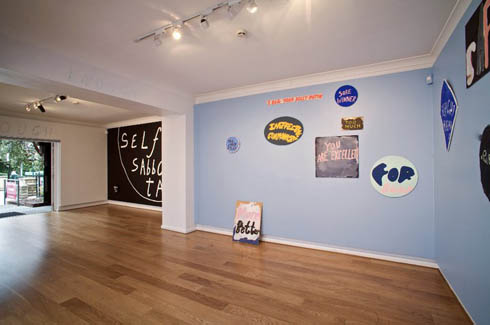 Text: Millie Stein Images: Tom Polo
Text: Millie Stein Images: Tom Polo
We all spend a good portion of each day deciding what we want to say. A larger part goes to working out what is required for us to make ourselves understood. But an even larger part is surely consumed by uncertainty over how we’re actually going to make people listen.
As an artist and, more recently, a curator (YES I CAN/NO CAN DO at Blacktown Arts Cenre) Tom Polo makes no bones about the fact that he is subject to these concerns just like, if not more than, everyone else. His paintings, often featuring a statement or slogan from modern discourse on failure and success, speak of the intense anxiety and confusion surrounding our ideas of ourselves in others’ eyes.
In expressing private, uncomfortable or even shameful thoughts, Polo calls in to question the contradictions and peculiarities that have become invisible to us in the struggle to develop and maintain our self-esteem. While certain works can feel piercing, what Polo offers is the rare chance to forgive our hunger for acceptance, to embrace our lapses in confidence – and even, if we can stand it, to find ourselves funny.
Millie Stein: How do you relate to ‘success’ as an artist? How do you measure your own ‘success’?
Tom Polo: To be able to describe my relationship with ‘success’, I’d have to know exactly what it is and I’m not sure I do. That’s why it is something that I am continually questioning in my practice. Besides being a subjective thing, I think the notion of ‘success’ is usually reliant upon time and importantly, always comparatively associated with ‘failure’. I like to think of these polar opposites as the extremes in which society categorises things within. Good and bad, winning and losing, high and low. Somebody somewhere is going to place you into one of these categories.
Also, asking someone if they are successful is like asking if they think of themselves as good looking (and that’s a really difficult question to answer when you know somebody is listening).
MS: I’d argue that a lot of artists deal with ideas about process in their work. Can you tell me about why you prefer to look at outcomes and end points?
TP: We live in such a goal orientated society that often ignores the stages (process) between beginning and end, focusing on an ‘end result’ in order to get a quick fix solution. I think this is why so many artists are focused on the details of ‘the process’. I’d say that while my work appears to operate around a process of immediacy, it’s the reduction and compression to create these short bursts that is just as important as what appears on the wall. In the studio I keep my work hung up and around continuously, so there is a constant force field of negative/positive reinforcement between each of them.
MS: Goal-orientation was also a big part of YES I CAN/NO CAN DO. Can you tell me a bit more about the idea behind the exhibition? What attracted you to this group of artists in particular?
TP: When I was approached by Blacktown Arts Centre to curate a show of ’emerging Western Sydney practices,’ I immediately wanted to steer clear of choosing a group of artists solely based on where they live. The other thing is, I was particularly interested in exploring the term ‘emerging,’ as it is so heavily thrown around. The four artists, Garry Trinh, Jodie Whalen, Ben Norris and Prophetic Initiatives (a collaboration between Leahlani Johnson and David Capra) work in ways that are all heavily process driven, both materially and conceptually.
As an artist working in this curatorial role, I never had a doubt that the exhibition wouldn’t (in some way) act as an extension of my own practice. Themes about success and failure, the mundane and the spectacular and the pursuit of ‘climbing that mountain’ naturally found their way into the exhibition. Garry Trinh goes on lengthy walks in suburbia documenting the uncanny and the absurd. Jodie Whalen uses the common practice of losing weight to discuss ephemeral and the outcomes of pursuit. Ben Norris’ studio practice fuses pliable materials with ready-made objects in a playful process that reworks aesthetic and function. Prophetic Initiatives, established as a ‘ministry’ to the art world by Leahlani and David, develop interactive performances that explore ‘stepping out in faith’.
There is a goal associated with each of these processes, which at times is contradicted, and in YES I CAN/NO CAN DO, works have been placed in the gallery in a way that tells this to the audience.
MS: Would it be fair to say that you use only a few colours and simple text to express pretty complicated concepts?
TP: The slogans, mantras, colloquialisms and statements that I use in my ‘Continuous One Liners’ series are sourced from social situations, overheard conversation, as well as self help guides and the genre of motivational speaking. The breaking down of text to its simplest form, which for the most part is something easily recognisable and understood by a wide audience, makes the work approachable so that people may relate to their own notions of what it means to win or lose, or even be cast as ‘the understudy’. Regarding the aesthetic of the work, the colours are partly influenced by covers of self help books from the 1970s and 80s… and partly by whatever paint I own at the time. I have to say, I think it’s quite an extensive palette!
MS: What is your relationship to affirmations? From your work, it’s hard to tell if you believe in them or are mocking the way other people believe in them.
TP: I think anybody who tries to achieve something in some form or another has (what is often to referred to as) ‘the drive’ or motivation to succeed. And I’m not even talking about climbing a mountain here. Climbing a (literal and not so literal) ‘staircase’ is just as much a triumph for some. Self help guides, motivational slogans and repetitive mantras exist for the people that need them. People like Anthony Robbins and Oprah Winfrey are, for some, the awe-inspiring gurus who help them believe that things are possible. My recent work, ‘The New Science of Personal Achievement (Tony),’ sets up this framework by placing a sea of faces, typical of an audience at a motivational speaking conference, against a single figure, ‘Tony’ represented not so much the person ‘Anthony Robbins,’ but the idea. And while there is a large amount of tongue-in-cheek humour applied on my part, I do so with pathos and understanding of a corrosive anxiety we have with the human condition.
MS: Similarly, it is always hard to tell how much of the self-deprecation in your work is real, or intended to make fun of the way we as a society are so self-doubting.
TP: It’s always been my intention to offer varying levels of contradiction in my work. When someone is reading or analysing the work, they then embody that self doubt that exists in the text being used. Humour is a great coping mechanism and it is also something people use as a defense strategy. Most of my favourite comedians are highly self-deprecating. It is that anchor point at which people can approach an artwork and relate it to their own experiences, mundane or spectacular. It’s comforting when that happens and we all need comfort. (The short answer is: a little from column A and a little from column B).
YES I CAN/NO CAN DO runs until 4 June at Blacktown Arts Centre.
Tom Polo
Next story: Sole Man – Tristan Blair



